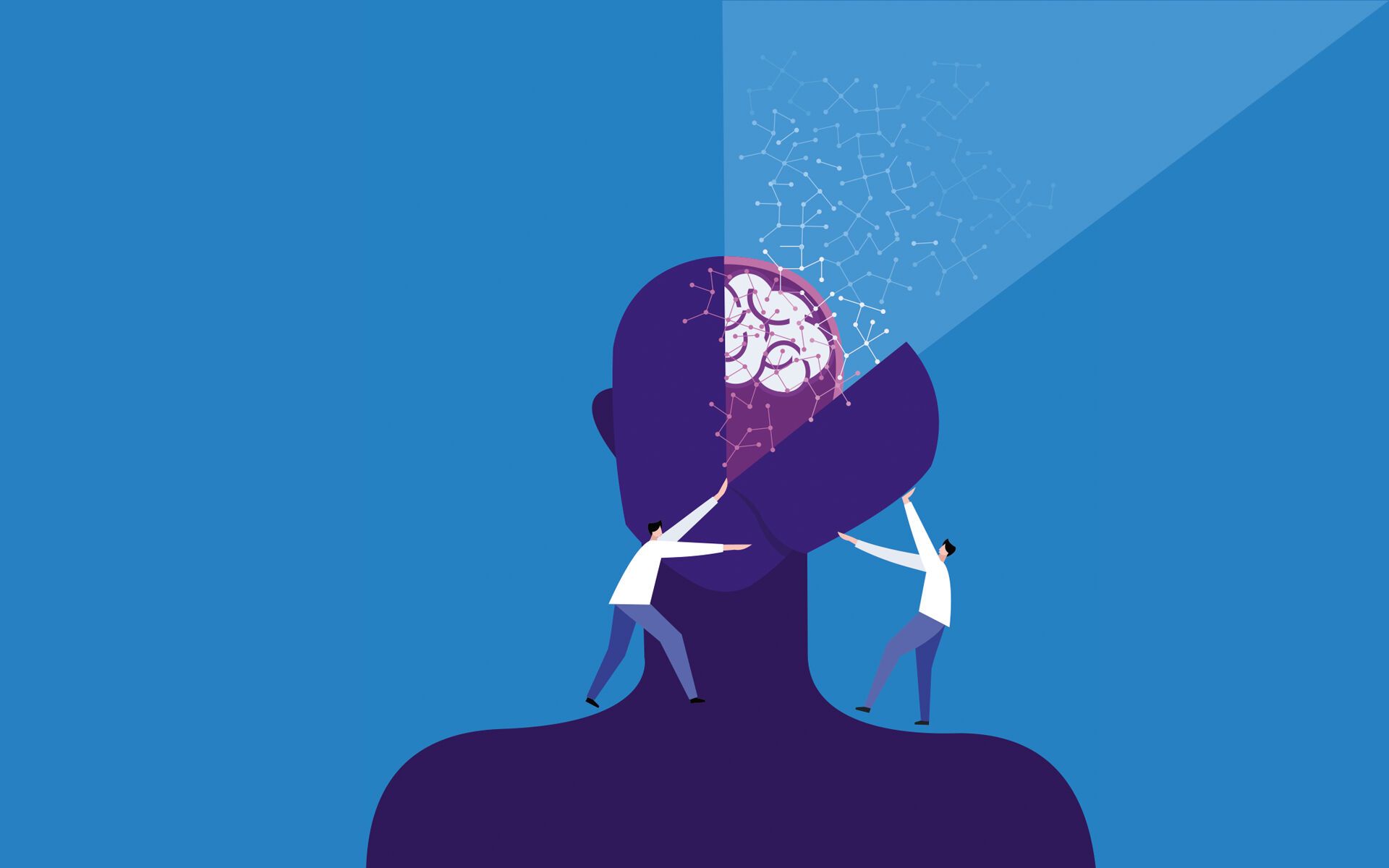Contemplating God

In This Article
-
The frontal lobe of the brain is responsible for governing human behavior, such as speech production, problem solving, and planning, and is remarkably larger in humans when compared to other animals.
-
If you look at the entire nervous system in context, you will see how armored everything is.
-
The human brain has more folds, sulci (like valleys) and gyri (like mountains), than any other species. These folds make it possible to fit the brain into skull.
When the novel coronavirus Covid-19 started to spread across the world at the end of 2019 and beginning of 2020, it challenged not only people but also systems. As Necip Fazil Kisakurek warned in his poem Destan, “Stop, you masses; this street is a dead end!” The Covid-19 pandemic has forced humans to change their lifestyles. Health, finance, and education systems could no longer preserve their status quo and were obliged to change to survive.
During this unprecedented situation, I tried to turn challenges into opportunities and asked myself: “What can I do during isolation for my personal and spiritual development?” Besides reading, watercolor painting, participating in spiritual and professional meetings via Zoom, learning daily Arabic words, and virtually visiting the British Museum to see the Pharaoh’s body mentioned in the Holy Quran (10:92), I took a free online course titled Fundamentals of Neuroscience - Part 1: The Electrical Properties of the Neuron from Harvard University on the edX platform [1]. With little background knowledge but lots of interest, I took this course to explore the beautiful names of God (Asma ul Husna) manifested in neuroscience. It was a self-paced, 5-week-long course with video lectures, quizzes, discussion board topics, and virtual field trips.
I really enjoyed the course. It made me think of and thank God “the most glorified” because of the amazing nervous system He bestowed upon me. It helped me to overcome my negligence and be aware of this magnificent creation. I witnessed the Divine Wisdom when a cadaver’s brain was examined in a video lecture recorded at the Harvard Medical School. As a very delicate organ, the brain was so well protected that it reminded me of one of the names of Allah (SWT)—Al-Hafız, or The Preserver, which means, “The One whose power preserves the heavens and the earth. The One who is the guardian and preserver of all the worlds. The One who protects and preserves all of creation from perishing. The One who is vigilantly guarding every detail of all that has been created. The One who remembers and preserves all that has ever been and all that is, while keeping under Divine protection the knowledge of all that shall be” [2].
The skull, which is an incredibly tough structure, encloses the brain like a chest. Then, there are three layers of meninges which protect the soft tissue of the brain from traumatic injury. The thickest and toughest layer is called the “dura mater,” which translates to “tough mother” [3]; (originally derived from medieval Latin, literally “hard mother,” which is a translation of Arabic al-'umm al-jafiya “coarse mother”). Since it embraces the brain for protection, it reminded me of the name Al-Raheem (The All-Merciful).
Another delicate organ, the spinal cord, is protected by bony pieces called vertebrae. Along the spinal cord are a huge number of little nerve fibers. They carry information to various muscles and ultimately bring sensory information back to the brain. Both the brain and spinal cord are bathed in fluid known as cerebrospinal fluid (CSF) [4]. This fluid’s duty is not only to carry nutrients to tissue and remove toxins and waste but also to protect the brain and the spinal cord [3]. It is not hard to see the manifestation of the name Al-Hafız (The Preserver) in this excellent creation. Cerebrospinal fluid is held inside layers of the meninges which surround the brain and spinal cord. In addition to the dura mater, the other two meningeal layers are called the pia mater and arachnoid mater. The dura mater, the outermost layer, is a tough connective tissue. However, heritable disorders and injuries that may happen during medical procedures such as epidural injections may lead to a hole or tear in the dura. When the spinal dura has a hole or tear, the cerebrospinal fluid (CSF) leaks out. These defects can be small or large, and often result in a low volume of CSF remaining around the brain and spinal cord. Among the symptoms of a leak or tear are severe positional headache and rarely, dementia, stroke, coma, and even death [4].
If you look at the entire nervous system in context, you will see how armored everything is. The skull, vertebrae, and cerebrospinal fluid are all created as an armor to protect the brain and spinal cord. However, despite this armoring, damage does sometimes occur. Because of concussive injuries, the brain sloshes around in the head which may result in some damage or swelling [3].
When the brain’s armor is breached, there are lessons to be learned. Phineas Gage (1823–1860), an American railroad construction foreman, is a famous case of someone who survived an accident in which a large iron bar went through the left side of his face, through his eye and straight through the top of his skull taking a significant portion of his brain's left frontal lobe with it. He was in a coma for a while until he amazingly woke up. The accident affected his personality and behavior over the remaining 12 years of his life in such a way that his friends said he was “no longer Gage.” Gage influenced 19th-century discussions about the mind and brain and was perhaps the first case to suggest the brain's role in determining personality, and that damage to specific parts of the brain might cause specific mental changes [3, 6].
The virtual field trip to the Warren Anatomical Museum in Harvard Medical School's Countway Library of Medicine was among one of the many exciting activities included in the course. In that museum, Phineas Gage’s skull is exhibited. Seeing his skull was like rabita al-mawt (contemplating death) for me. As human beings, we may suffer from ineffable pains while we live, but patience, submission to God, and consent to the tests we face are some of the essentials for turning pain into gain in the hereafter.
Phineas Gage’s incident made me contemplate another aspect of God’s flawless creation. Everything that we see on one side of the brain is replicated on the other side. So, despite damage on one side, it can still be possible to not have major deficits. Even though Gage became less capable, he was still highly functional: he travelled abroad and held a job. From the neuroscience perspective, our brains make us who we are. The frontal lobe of the brain is responsible for governing human behavior, such as speech production, problem solving, and planning, and is remarkably larger in humans when compared to other animals [3].
The brain’s physical structure is also amazing. We possess more brain folds, sulci (like valleys) and gyri (like mountains), than any other species. These folds make it possible to fit the brain into skull. It is like the way that human intestines, which can range from 7.5 to 8.5 meters (25 to 28 feet) in length [7], crumple in on themselves to be able to fit inside the abdominal cavity. This similarity encourages me to contemplate more about creation of the One and Only Deity, Who is Al-Ahad (The Unique), Al-Wahid (The One), Al-Khaliq (The Creator), Al-Baari’ (The Originator), and Al-Musawwir (The Fashioner).
During this course, I had a chance to learn more about our nervous system and the neurons (nerve cells) which use electrical signaling to communicate and allow our nervous system to function. How can such tiny and unconscious neurons (we have about 86 billion of them in our brains [8] work in harmony without the knowledge of physics, mathematics, chemistry, and electricity to make us talk, walk, think, feel, etc.? It is because they are obedient soldiers of The All-Knowing, The All-Wise, and the One to Whom all praise is due.
References
- edX: a massive open online course provider founded by Harvard and MIT. https://en.wikipedia.org/wiki/EdX#cite_note-3
- AsmaulHusna, http://www.asmaulhusna.in/?99BeautifulDevineNamesofAllah&AsmaulHusna&name=AL-HAFIZ,
- edX Harvard University, https://courses.edx.org/courses/course-v1:HarvardX+MCB80.1x+2T2020/course/
- Spinal CSF Leak Foundation, https://spinalcsfleak.org/about-spinal-csf-leaks/overview/
- Bediuzzaman Said Nursi, 25th Flashes, 7th Remedy, http://www.erisale.com/?bookId=203&locale=en&pageNo=265#content.en.203.270
- https://en.wikipedia.org/wiki/Phineas_Gage
- Length of a Human Intestine, The Physics Factbook, https://hypertextbook.com/facts/2001/AnneMarieThomasino.shtml
- Kendra Cherry, How Many Neurons Are in the Brain, https://www.verywellmind.com/









